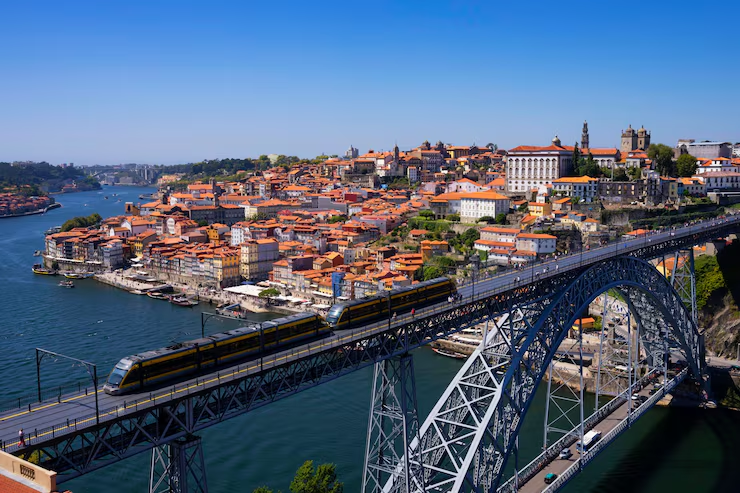If you’ve decided to take on the Portuguese Way to Santiago, one of the first decisions you’ll have to make is whether to choose the Coastal Route or the Central Route. Both offer unique experiences, but each has its own features, attractions, and challenges. This article will help you make an informed decision and discover which path best suits your interests and needs.
Route Options on the Portuguese Way
The Portuguese Way to Santiago, known for its rich history and stunning landscapes, divides into two main routes from Porto: the Central Route and the Coastal Route. Both routes merge again in Redondela, allowing you to experience the best of both depending on your preferences.
Before deciding, it’s important to consider the main characteristics of each route. Here’s an initial overview:
- Central Route: 242 km / 150 miles
- Terrain: Mountains, forests, fields, stone paths
- Duration: 10 – 12 days
- Coastal Route: 268 km / 167 miles
- Terrain: Coast, beaches, trails, paths
- Duration: 12 – 14 days
Pros and Cons of the Central Route
The Central Route is famous for its rich history and culture, but it also presents certain challenges. Here are its main highlights and drawbacks.
Advantages of the Central Route
- Pass through historic towns: The Central Route is filled with history, including Roman roads and centuries-old bridges. As you walk, you’ll follow in the footsteps of historical figures like Queen Isabel of Portugal.
- Popularity: With more pilgrims on this route, you’ll have the opportunity to socialize and make new friends along the way.
- Good infrastructure: The route is well-marked and offers plenty of accommodation and services for pilgrims.
Disadvantages of the Central Route
- Cobbled paths: Walking along numerous cobblestone streets can be tiring, especially on long days.
- Challenging ascent: The climb up Alto da Portela Grande de Labruja, with 400 meters of elevation gain, requires effort and care.
- Intense heat: During summer, temperatures can be extreme, making the journey more demanding.
- Availability of hostels: Due to its popularity, hostels can fill up quickly, so it’s advisable to start early or book in advance.
Who is the Central Route for?
This route is ideal for:
- History and culture enthusiasts
- Pilgrims looking for a social experience
- Traditional Camino followers
Exploring the Coastal Route
The Coastal Route, on the other hand, offers a completely different experience, with sea views and a more relaxed atmosphere. Here are its pros and cons.
Advantages of the Coastal Route
- Coastal scenery: The Coastal Route is known for its breathtaking ocean views, white sandy beaches, and charming fishing villages.
- Mostly flat terrain: Ideal for those seeking an easier walk, this route has fewer steep climbs.
- Refreshing sea breeze: Walking along the coastline is especially pleasant in summer thanks to the cool ocean breeze.
- Fewer pilgrims: With fewer walkers on this path, you’re less likely to face full hostels, ensuring a more peaceful experience.
- Litoral Path variant: For those wanting even more seaside walking, the Litoral Path follows the coastline almost continuously.
Disadvantages of the Coastal Route
- Longer distance: As it’s slightly longer, it will require one or two additional days to reach Santiago.
- Adverse weather in winter: During the colder months, the route can be challenging due to rain and strong winds.
- Fewer food options: Some sections have limited restaurants and services, so plan to bring your own snacks.
Who is the Coastal Route for?
The Coastal Route is perfect for:
- Lovers of the sea and the beach
- Pilgrims who prefer gentler terrain
- Travelers with extra days to enjoy the scenery
A Combination of the Best Routes
If you feel the need to experience both routes, it’s also possible! You can start on the Coastal Route and then join the Central Route before reaching Redondela. Here are two popular points where you can make the transition:
- Caminha to Tui: Perfect for those who want to enjoy a few days by the sea before switching to the Central Route.
- Vila do Conde to São Pedro de Rates: An option for those seeking a small taste of the coastal experience before heading inland.



